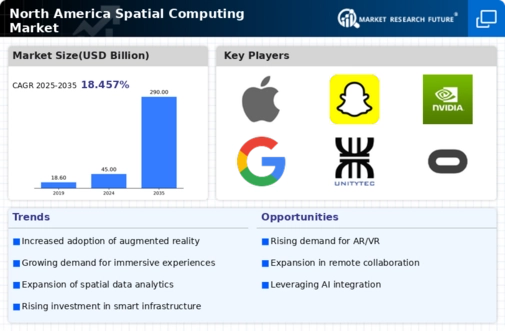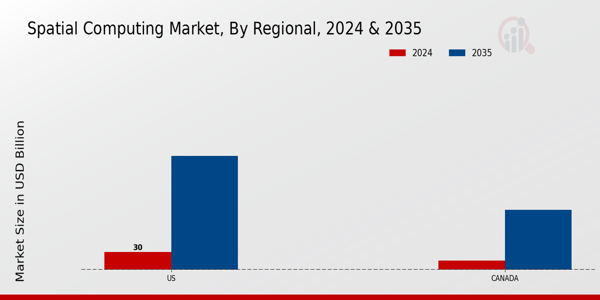The North America Spatial Computing Market is characterized by rapid technological advancements and an influx of innovative applications that leverage augmented reality (AR), virtual reality (VR), and mixed reality (MR). The competitive landscape is dense, comprising various players that are consistently pushing boundaries through various strategies such as product innovation, partnerships, mergers, and acquisitions. Companies are focusing on enhancing user experience while optimizing hardware and software capabilities to cater to different industries, including entertainment, healthcare, education, and retail.
The need for real-time data visualization and immersive experiences is driving growth, leading to increased competition among both established tech giants and emerging startups. This thriving environment fosters a continual adaptation of strategies in order to maintain competitive advantages, meet consumer expectations, and align with evolving market trends.In the North America Spatial Computing Market, Apple has established a formidable presence driven by its commitment to innovation, design excellence, and a strong brand loyalty among consumers.
The company's strengths lie in its robust ecosystem of devices and platforms that synergistically support spatial computing applications. With offerings such as ARKit, developers can easily create immersive experiences for iOS-powered devices, promoting widespread adoption and integration of augmented reality in practical applications. Furthermore, the introduction of headsets and wearables enhances AR capabilities while maintaining Apple’s signature focus on user interface and user experience.
The company’s substantial investments in research and development allow it to remain at the forefront of spatial computing technology, enabling it to respond adeptly to market dynamics and leverage its established customer base for the adoption of new and innovative experiences.
Snap has built a significant position in the North America Spatial Computing Market with a strong emphasis on social media integration and user-generated content. Its flagship products, particularly Snapchat, have incorporated AR features that allow users to overlay digital elements onto the real world, fostering interactive user engagement. Snap's continual advancements in computer vision and machine learning bolster its capabilities in delivering compelling AR experiences, appealing to younger consumer demographics.
The company has expanded its offerings with various AR-enhanced lenses and filters, which are popular among users, thus solidifying its standing in the market. Snap has also pursued strategic partnerships to enhance its technology and reach, alongside investing in talent and innovative techniques to advance its spatial computing capabilities. Furthermore, the launch of Snap's smart eyewear highlights its commitment to integrating spatial computing into everyday experiences. At the same time, its agility in adapting to consumer trends keeps it relevant and competitive in the fast-evolving North American market landscape.















